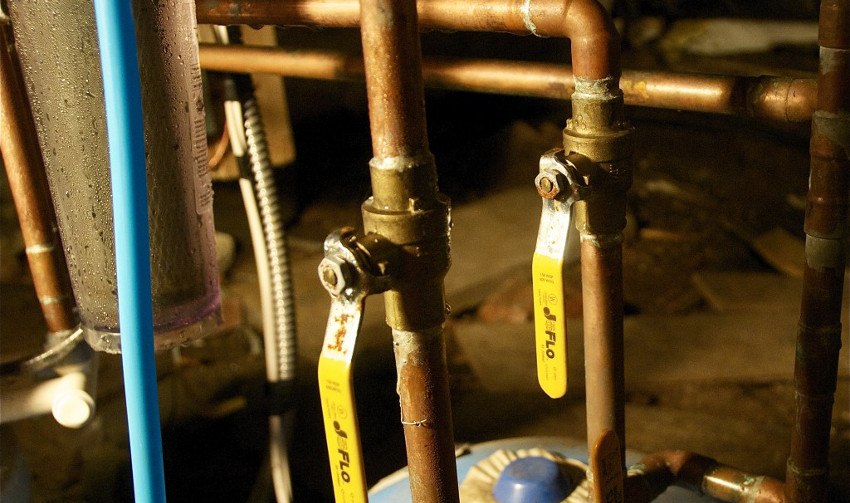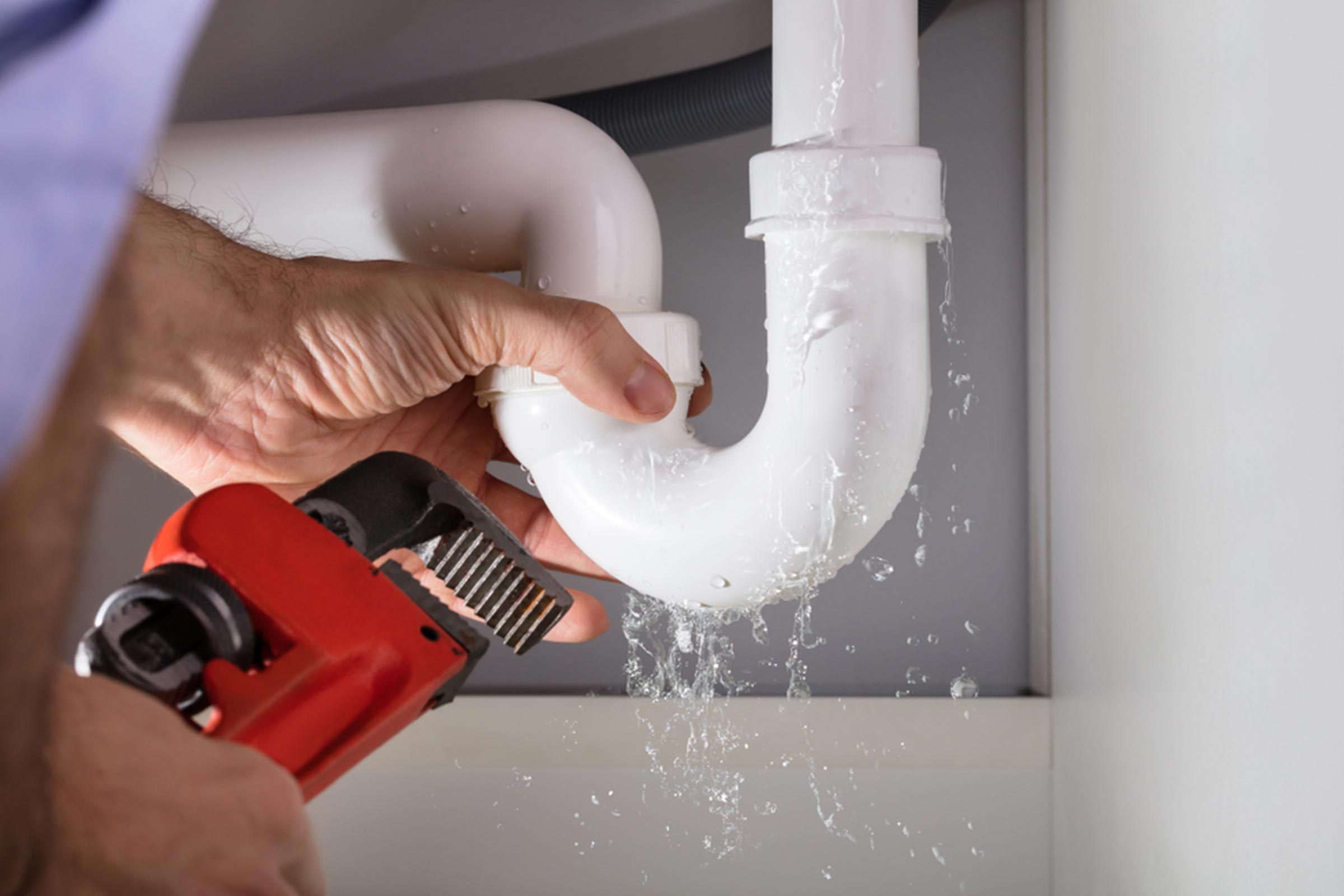We've found this article involving How To Fix Noisy Pipes directly below on the web and concluded it made sense to share it with you on this page.

To identify loud plumbing, it is essential to establish very first whether the undesirable noises occur on the system's inlet side-in other words, when water is transformed on-or on the drainpipe side. Noises on the inlet side have actually differed reasons: excessive water stress, used shutoff and faucet parts, poorly linked pumps or other appliances, improperly positioned pipeline bolts, and plumbing runs consisting of way too many limited bends or various other limitations. Noises on the drain side usually come from poor place or, just like some inlet side noise, a layout having tight bends.
Hissing
Hissing noise that happens when a faucet is opened slightly usually signals excessive water stress. Consult your local public utility if you think this problem; it will have the ability to inform you the water pressure in your location and also can set up a pressurereducing valve on the incoming water supply pipeline if required.
Other Inlet Side Noises
Squeaking, squealing, scraping, snapping, and also touching normally are brought on by the growth or tightening of pipes, typically copper ones supplying warm water. The audios take place as the pipelines slide versus loosened bolts or strike neighboring residence framework. You can typically pinpoint the location of the problem if the pipelines are revealed; simply comply with the sound when the pipelines are making noise. Probably you will uncover a loosened pipeline hanger or a location where pipelines lie so near flooring joists or various other framing pieces that they clatter against them. Affixing foam pipeline insulation around the pipelines at the point of call need to correct the issue. Make sure straps and also wall mounts are protected as well as supply ample assistance. Where feasible, pipe bolts must be affixed to substantial architectural components such as structure wall surfaces rather than to framing; doing so lessens the transmission of resonances from plumbing to surfaces that can intensify as well as transfer them. If affixing bolts to framework is inescapable, wrap pipes with insulation or various other durable product where they speak to fasteners, and also sandwich the ends of brand-new fasteners between rubber washers when mounting them.
Dealing with plumbing runs that experience flow-restricting tight or countless bends is a last option that needs to be carried out only after speaking with a competent plumbing professional. Sadly, this circumstance is relatively usual in older houses that might not have been developed with interior plumbing or that have seen numerous remodels, particularly by beginners.
Babbling or Screeching
Extreme chattering or screeching that takes place when a valve or tap is switched on, which usually vanishes when the installation is opened fully, signals loose or defective interior components. The option is to change the valve or faucet with a brand-new one.
Pumps and also home appliances such as washing devices as well as dish washers can move electric motor noise to pipes if they are incorrectly connected. Connect such things to plumbing with plastic or rubber hoses-never inflexible pipe-to isolate them.
Drain Sound
On the drainpipe side of plumbing, the chief goals are to eliminate surface areas that can be struck by falling or rushing water as well as to protect pipelines to consist of inescapable sounds.
In brand-new construction, bath tubs, shower stalls, commodes, and wallmounted sinks and basins should be set on or versus resistant underlayments to minimize the transmission of audio via them. Water-saving bathrooms and faucets are less noisy than traditional models; mount them rather than older kinds even if codes in your location still allow using older components.
Drains that do not run up and down to the basement or that branch right into horizontal pipe runs sustained at floor joists or various other mounting present specifically bothersome noise problems. Such pipes are big enough to radiate significant vibration; they likewise bring significant amounts of water, which makes the situation even worse. In brand-new construction, specify cast-iron soil pipelines (the huge pipes that drain commodes) if you can manage them. Their enormity has a lot of the sound made by water going through them. Likewise, prevent directing drainpipes in walls shown to bedrooms and rooms where individuals gather. Walls containing drainpipes need to be soundproofed as was defined previously, making use of dual panels of sound-insulating fiberboard and also wallboard. Pipelines themselves can be covered with unique fiberglass insulation produced the objective; such pipelines have an impervious vinyl skin (in some cases having lead). Outcomes are not always acceptable.
Thudding
Thudding sound, typically accompanied by trembling pipelines, when a faucet or device shutoff is shut off is a condition called water hammer. The noise and vibration are brought on by the reverberating wave of pressure in the water, which instantly has no location to go. In some cases opening up a shutoff that discharges water promptly into an area of piping having a limitation, elbow, or tee fitting can produce the same condition.
Water hammer can normally be cured by mounting installations called air chambers or shock absorbers in the plumbing to which the issue shutoffs or faucets are attached. These gadgets allow the shock wave produced by the halted flow of water to dissipate in the air they consist of, which (unlike water) is compressible.
Older plumbing systems may have short upright sections of capped pipeline behind walls on tap runs for the same function; these can at some point full of water, lowering or destroying their efficiency. The treatment is to drain the water supply completely by shutting off the major water supply valve and also opening all faucets. Then open up the main supply valve and shut the taps individually, beginning with the faucet nearest the shutoff and ending with the one farthest away.
WHY IS MY PLUMBING MAKING SO MUCH NOISE?
This noise indeed sounds like someone is banging a hammer against your pipes! It happens when a faucet is opened, allowed to run for a bit, then quickly shut — causing the rushing water to slam against the shut-off valve.
To remedy this, you’ll need to check and refill your air chamber. Air chambers are filled with — you guessed it — air and help absorb the shock of moving water (that comes to a sudden stop). Over time, these chambers can fill with water, making them less effective.
You’ll want to turn off your home’s water supply, then open ALL faucets (from the bathroom sink to outdoor hose bib) to drain your pipes. Then, turn the water back on and hopefully the noise stops! If you’re still hearing the sound, give us a call to examine further.
Whistles
Whistling sounds can be frustrating, as sometimes the source isn’t easily identified. However, if you can pinpoint which faucet or valve that may be the cause, you’ll likely encounter a worn gasket or washer — an easy fix if you replace the worn parts!Whistling sounds from elsewhere can mean a number of things — from high water pressure to mineral deposits. Your best plan of attack here is to give our plumbing experts a call. We’ll be able to determine where the noise is coming from and what the cause may be, then recommend an effective fix!
Cracks or Ticks
Cracking or ticking typically comes from hot water going through cold, copper pipes. This causes the copper to expand resulting in a cracking or ticking sound. Once the pipes stop expanding, the noise should stop as well.
Pro tip: you may want to lower the temperature of your water heater to see if that helps lessen the sound, or wrapping the pipe in insulation can also help muffle the noise.
Bangs
Bangs typically come from water pressure that’s too high. To test for high water pressure, get a pressure gauge and attach it to your faucet. Water pressure should be no higher than 80 psi (pounds per square inch) and also no lower than 40 psi. If you find a number greater than 80 psi, then you’ve found your problem!
Next step is to give us a call in order to install a pressure regulator. Trust us, you don’t want to wait to resolve this issue. Not only is the sound annoying, but high water pressure can be destructive to your home — including damaging certain appliances, like your washer and dishwasher.
Dripping
You might be accustom to the slow quiet drip your kitchen faucet makes. You might have even tuned out your bathroom sink dripping and drabbing all day long — but it’s time to find its cause.
A slow drip could signify a variety of easy to fix issues, such as a worn out O ring, or loose part. And by ignoring the drip, you could be wasting up to 2,000 gallons of water a year! So start conserving water — get it looked at ASAP.
https://www.pwessig.com/blog/2018/december/why-is-my-plumbing-making-so-much-noise-/

We were guided to that editorial about Why Your Water Pipes Are Noisy and How To Shut Them Up through an associate on another site. In case you liked our blog posting please make sure you remember to share it. I take joy in reading our article about Why Do My Pipes Make Noises.
Additional Information